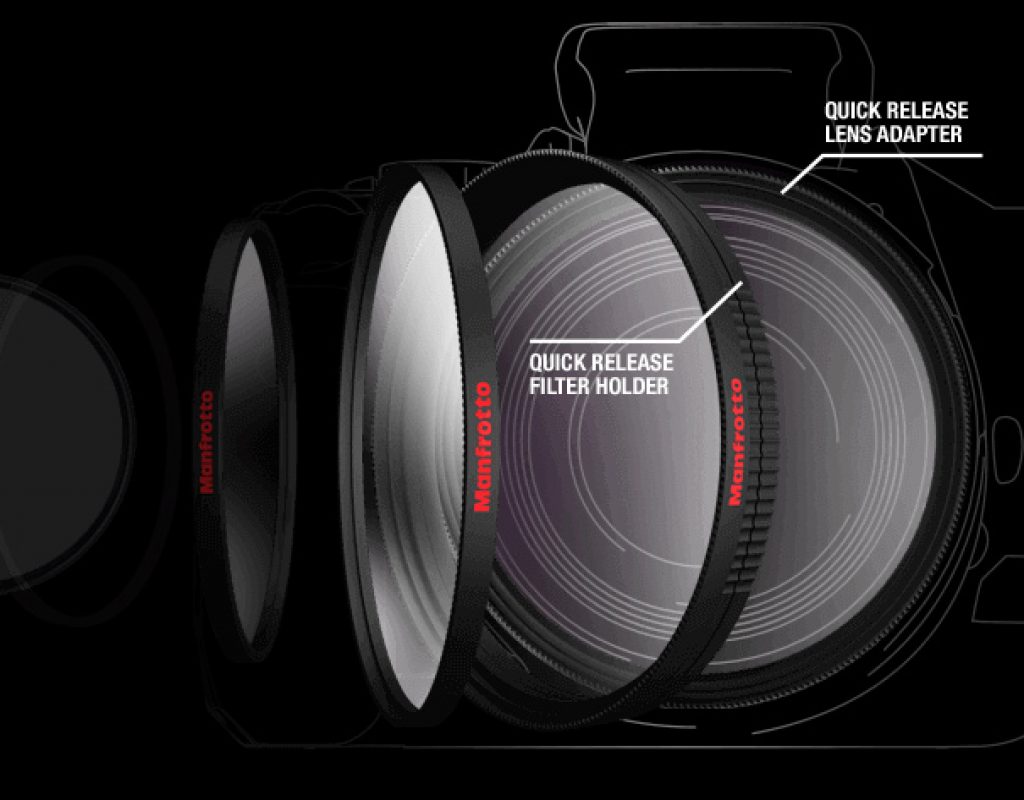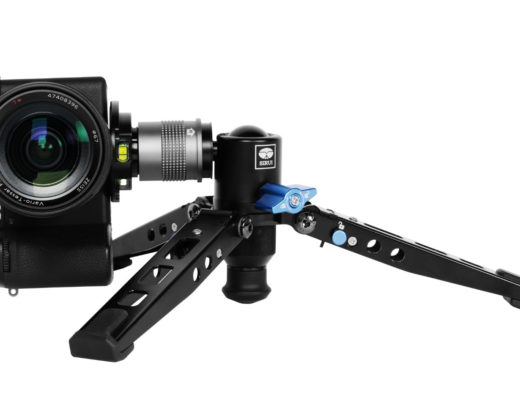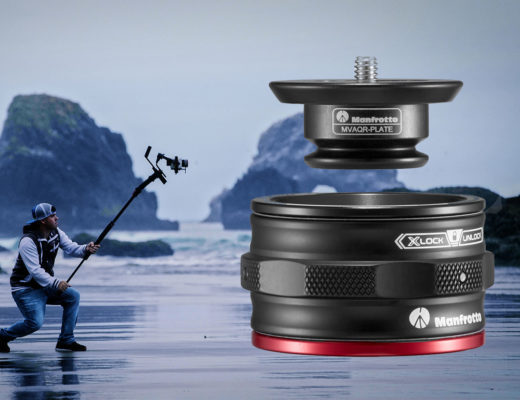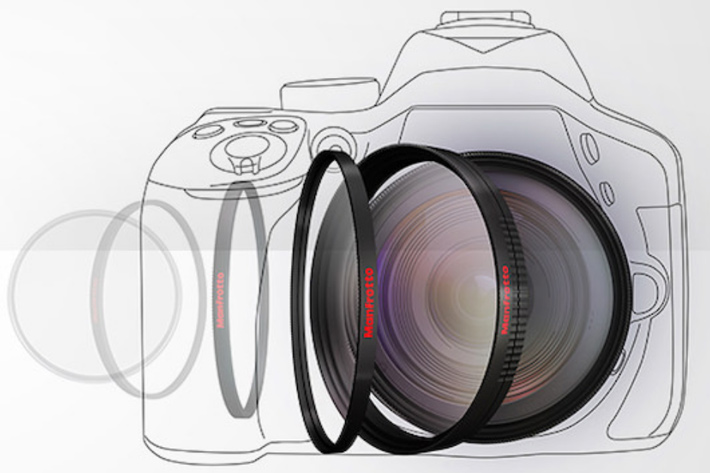
The concept is interesting: adapters that use magnetic strength to keep your filters in place. That’s what the Xume quick release system offers. Manfrotto mixes the Xume with its filters, and I’ve tried the system in recent months.
The Lens Filter Suite is an ingenious idea that will cost you more money than you’ve ever imagined you could invest on a filter adapter, but may well pay itself in the long run. Before we continue, though, let me explain you how Manfrotto reached the final solution called Lens Filter Suite. Sometime ago Manfrotto acquired the Xume magnetic adapters, which are a set of a filter holder and a lens adapter, using magnets to keep the filter in place. Xume adapters are not exactly new, as they exist since 2011, but Manfrotto made efforts to turn the concept popular since acquiring it. These magnetic adapters put an end to screwing and unscrewing filters in front of your lens.
The process is simple: you screw the adapter in front of your lens and screw the filter holder on the filter itself. Because they have magnets, they allow to quickly connect filter to lenses with the highest precision, and faster than it took you to read this line. That’s an important aspect of the whole process and the reason, I believe, that will make people want to try the Xume. Or, as Manfrotto puts it, the Lens Filter Suite, which is, as the company says, “a magical combination of Manfrotto’s high-quality filter families and quick & easy Xume adapters. Coupling these two elements you will have a wide range of filters available for instant attachment to your lenses.”
https://youtu.be/FUr16-Qi0aE
The Lens Filter Suite is a way for Manfrotto to sell its line of filters, from protection to UV, Neutral Density or polarizers, with a filter holder system that is great for photography and video, although it requires some caution in use as well as when buying the system. Because you’re using an adapter and a filter holder over you lens, you might find out you’ve vignetting at extreme wide-angles (especially if you’re on a full frame sensor), meaning you should buy the largest filter you can, using step-up rings for smaller diameter lenses. One word of caution in terms of use: when moving around, don’t leave the filter on the lens. Although the magnets seem to be strong enough to keep everything in place, I would not trust it if I have to do more than simply move my camera a few meters.
Buying into the system is not cheap, so I believe you’ve to sit down, see what your needs are and decide if you want to invest in the Xume adapters. I’ve used them with Manfrotto’s series of Neutral Density filters – but you can use any other brand of filters – , and they are worth considering for both video and photography. Let me take you through some of the math I made, before going ahead and explore what the filters can do for you.
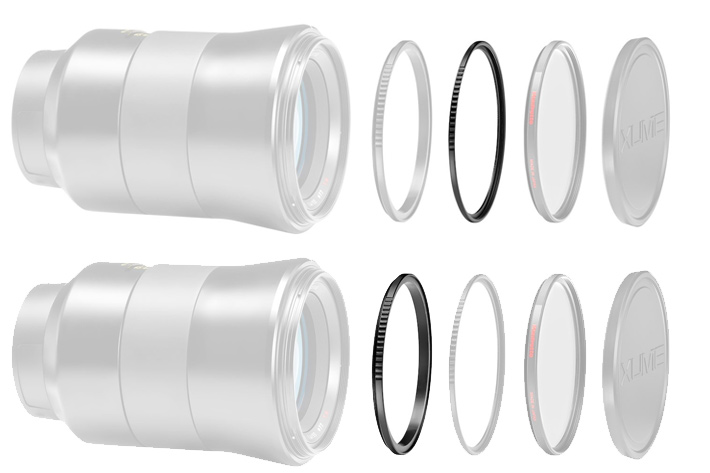
As I mentioned, the concept is interesting, although it means you need to get adapters and holders for all your lenses.This means you’ve to spend a bit of money before you have the system working. For example, a 49mm filter holder costs $10.99, while the lens adapter costs $29.99, meaning you need to spend $40.98 to use the Xume quick release with your 49mm diameter lens. If you’ve a 72mm lens, you’ll pay $32.99 for the filter adapter, plus $10.99 for the filter holder, meaning you’ll pay $43.98 to use the system. And if you don’t have them, you still have to buy the filters…
The idea is bright on paper, but if you consider you need to buy filter adapters for all your lenses, than the price to pay to have quick release for all your lenses might make you think twice. Just imagine you’ve three lenses with the following diameters: 52, 67 and 72mm. You need to buy three Xume filter holders, a total of $32.97, and then you’ve to buy the adapters for each lens, costing $29.99, $31.99, $32.99, for a total of $94.97. Add to it the cost of the filter holders and you’ve spent $127.94. And you still have no filters to use the system with.
I’ve tried to find out ways to make this cheaper, but to use the magnetic quick release Xume there seems to be no alternative method. I found out that because the holder and adapter are magnetic, you can place a larger holder over a smaller adapter on the lens, and it stays there, but it is flimsy and does not guarantee your filter will not fall. As Manfrotto states on the package, “a same-sized Manfrotto Xume Filter Holder is required in order to use this product”.
If you use a protective filter on your lens, and want/need to remove it (you should!) to use a polarizer or any other circular filter, then you’ve some extra work to do. You would need to remove your protection filter, screw the lens adapter, and then your filter, already screwed on the holder, will attach to the lens, as if by magic. If you use filters for video or photography and change them multiple times, I believe the extra work is worth it, because afterwards the magic of the Xume will give you a better workflow. The filter holds safely in place, but, as I mentioned above, I would not trust the system to keep my filter in place when moving from location to location. No way am I going to walk around with an expensive filter that is not firmly attached to the lens. One note: Manfrotto offers a lens cap for the 77mm version, which you may want to buy if you intend to walk around with the filter attached to the system.
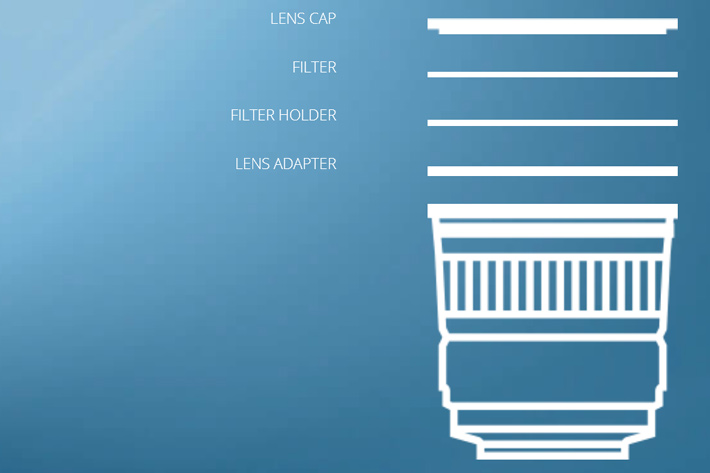
Before we continue, it is important to mention that many users will point to square filters and holders and adapters as an alternative. I am aware of it, but I must say I’ve stopped using square filters and holders years ago, because of one thing: photographing landscapes near the seaside, with Neutral Density filters, meant I would sometimes spend more time cleaning the salt spray from the multiple surfaces than photographing. Using multiple filters meant I would have four, six or more surfaces to clean, and when I finished cleaning one, the others, sometimes, were dirty again. With filters that screw on the lens you just have a single surface to clean, the one that is exposed to the elements at the time. I know this solution does not work with grads, but as I don’t use them – but use multiple NDs together – the Xume fits my workflow.
Your mileage may vary but let me take you through my own example, which may give you some hints about how the system may work for you. I have a protection filter on all the lenses I use. This means that I need to remove it when I want to use another filter. This said, I don’t use many filters. I use mostly NDs, and sometimes a polarizer. I also have a Variable ND, rarely used these days, but that one I use directly or with a step-up ring, and that’s it.
Before we continue, let me mention the lenses I use the most: a 17-40mm, and a 100-400mm, both with 77 diameter, and a 18-135mm and a 100mm macro, both with 67mm diameter. Because I usually just use a couple of them – the 18-135mm and the 100-400mm -, having two Xume lens adapters is enough for my needs. If I need to use any of the other lenses I just swap the Xume lens adapter between lenses.
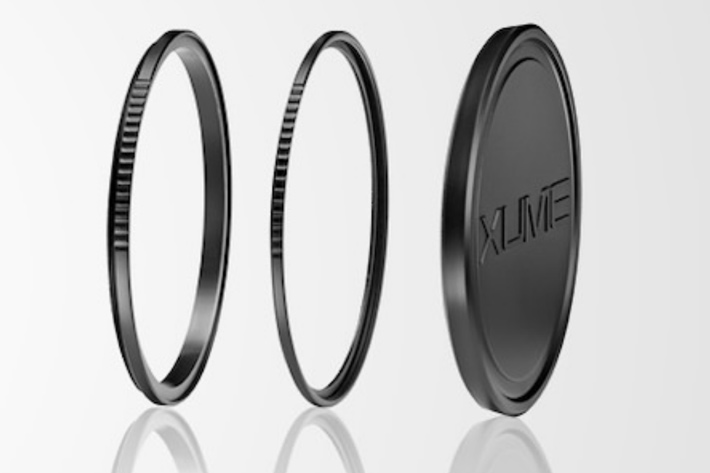
When I buy filters, I always buy them in the 77mm size, because I can use the same filter for smaller diameter lenses. It makes complete sense to me as, besides spending less money, I need to carry less weight. A low profile step-up ring, in this case one 67-77mm, allows me to use the filter with different lenses. I also have step-up rings for other lenses, always XX-77mm, but this is the one I always have in my backpack.
I introduced the step-up ring into the Xume system, and it works for me. I use the Xume as a quick way to change ND filters, from ND8 to ND500 through a ND64 when photographing subjects with a tripod. If I am photographing a subject and need to have more control over shutter speed and aperture, I like to use NDs. But screwing, unscrewing NDs, when you want your camera to be stable, locked into a specific framing, is not the easiest task in the world. It’s here that the Xume works like a charm, allowing me to simply swap filters by holding the filter and removing it from the front of the lens.
Used as mentioned above, the Xume is great for photography, and it works for video too. One practical example is using the EF 18-135mm NANO lens from Canon, my lens of choice for video because of its coverage and features. Once I’ve the camera set up – an EOS 80D – and locked on the scene, I place the lens adapter on the lens. Because the ND filters I use are all 77mm in diameter, I use the step-up ring 67-77mm with them for this lens. On the ring I screw the filter holder, and then the ND filter I need. When I move the step-up ring close to the front of the lens, the magnetic system makes the two parts join and the filter is in place.
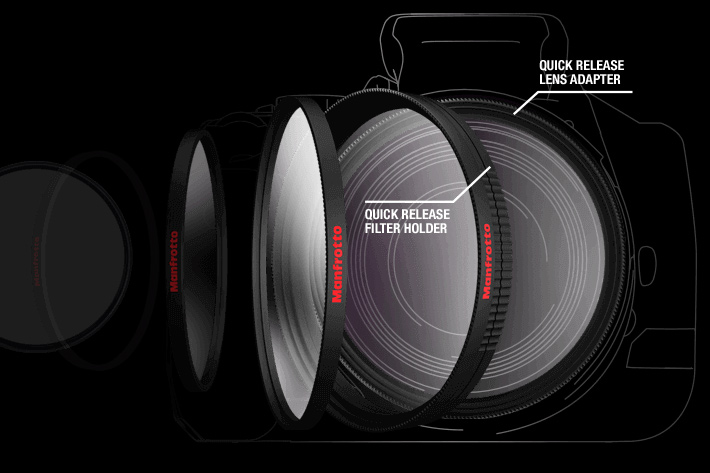
If I need to swap filters, I just remove the filter+step-up ring+filter holder, change the ND for another value and get the filter back in front of the lens, without moving the camera. It works! Because I only have one filter holder I still have to screw each filter on the filter holder/step-up ring, but that’s better than trying to screw it directly on the camera mounted on the tripod. Buying a filter holder for each ND filter I have (filter holders cost from $10.99 to $14.99, depending on size), along with a step-up ring, which has a minimal cost, will allow me to use the Xume system exactly as Manfrotto promises it works: enhanced fluidity to your workflow, saving the lost time and tedium of installing and removing your filters.
Landscape photographers and anyone who needs to change filters many times will love the way the Xume works, as there is no need to align the thread and screw the filter precisely in place. For video, it takes the pain of changing NDs for controlling light. It’s not the same as simply turn a lever to change the ND’s inside a video camera – as the EOS C100 I sometimes use – but it comes as close as you can when using a DSLR.

Filmtools
Filmmakers go-to destination for pre-production, production & post production equipment!
Shop Now